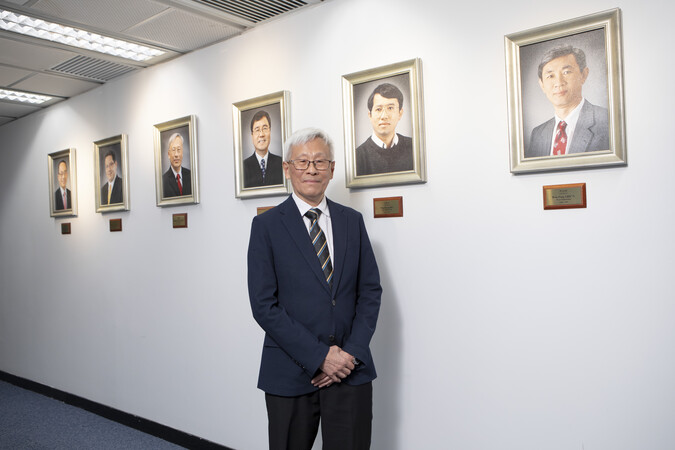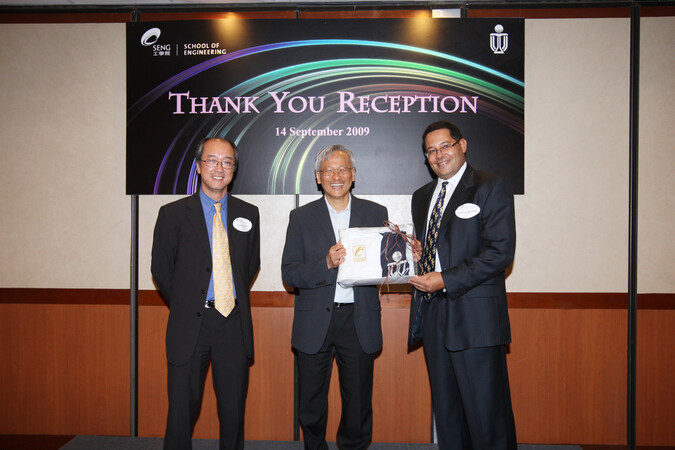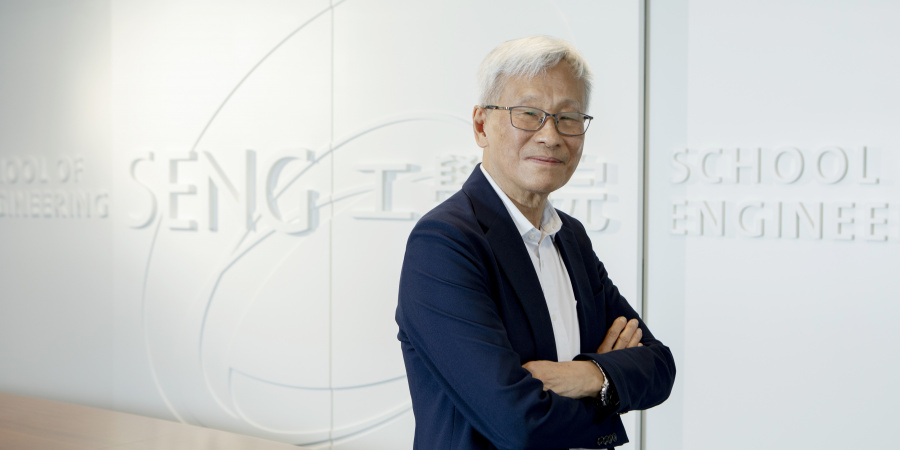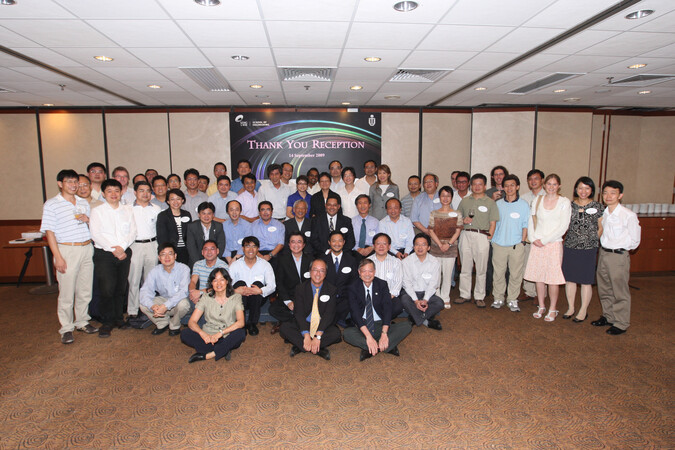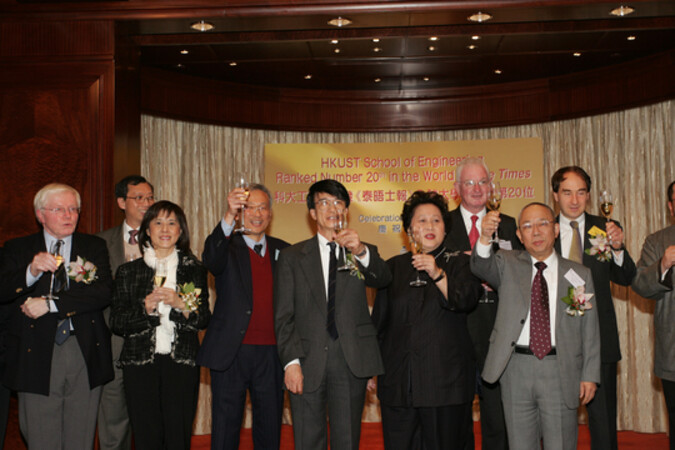Opportunity of a Lifetime I Couldn’t Miss
Prof. Philip CHAN Ching-Ho joined the School of Engineering in 1991 as a founding member. He served as Head of the School of Engineering’s Electrical and Electronic Engineering Department from 1995-2002 and Dean of the School from 2003-09. He was Director of the Nanosystem Fabrication Facility from 1997-2003. From 2010-20, he held the positions of Deputy President and Provost at Hong Kong Polytechnic University. He became Professor Emeritus in HKUST’s Department of Electronic and Computer Engineering in 2010.
What made you risk the move to a “start-up” university?
I had been working at Intel in Santa Clara (Silicon Valley) for 10 years, when I first heard about the HKUST project. I was involved in a joint research project with Prof. Ping KO, who was a faculty member at UC Berkeley back then. When I stopped by his office one time, I saw a poster on the wall that made me curious. It turned out to be the site for HKUST. ‘If you are interested in knowing more, come to a party next week,’ he said. So, I went to the address that Prof. Ko gave me and it turned out to be [Founding President] Prof. Chia-Wei WOO’s house in the Bay Area. Prof. Woo gave a talk and I was able to meet him along with others involved in the project. I remember Prof. Woo said to me: ‘Philip, it’s like a start-up, except this will be a university. And it will have resources.’ The figures he mentioned were very large. ‘It means you will basically be able to implement your vision.’
This sounded really attractive to me. However, when I told my wife about the idea of going to Hong Kong, she thought I was having a mid-life crisis! Anyway, a year or so went by. Eventually, I received a call from [Founding Dean of Engineering] Prof. CHANG Hsin-Kang. He came to see me, trying to convince me to join HKUST. I then arranged to fly back to Hong Kong for an interview. My wife was invited to come too. Like me, she was originally from Hong Kong, but hadn’t been back for quite a few years. We both enjoyed the visit and relished some very good dinners there! I think it was that trip that changed her mind about the reluctance to move. So, we packed up, enrolled our two children in international schools in Hong Kong, and I became one of the earliest members of HKUST’s School of Engineering (SENG).
What was your specific motivation for taking up the challenge?
To be part of starting a university in Hong Kong that had never been done in this way before – a high-level North American type of research university, with adequate funding support from the Hong Kong government. Other universities in Hong Kong were what I considered teaching universities and followed the British university system. I thought: ‘Wow, this is a once-in-a lifetime experience.’ So, I took it.
At what stage did you join HKUST? Pre-establishment?
Yes. I joined HKUST in May 1991 and immediately was very busy with preparing the engineering undergraduate curriculum and research laboratory, as the first students were due to join that October. We were still in HKUST’s initial offices in Tsim Sha Tsui as the Jockey Club had not finished the Clear Water Bay campus yet. Most of the early members of SENG received their higher education in the US and were familiar with a US-style curriculum. But we all came from different schools, different backgrounds, and wanted to include the good elements from each. The problem was we actually put too much into the curriculum in the first round, making the workload pretty heavy for the students. After one year, we realized this and made adjustments.

What stands out to you about your time as Dean?
My goals as Dean included educating world-class engineers, and nurturing faculty and graduates that contribute to the region through hi-tech enterprises – as they do in Silicon Valley. And I recall, it was during my tenure as Dean, the School was first ranked among the world’s top 100 schools of engineering by Times Higher Education. We were compared with universities over 100 years old yet we were ranked at No.20 after only 13 years! That was a very remarkable accomplishment. We knew we were good, but didn’t expect we would earn regional and international recognition in such a short time. So, we had a celebration party together with Council members, then HKUST President Prof. Paul CHU, and the University Grants Committee (UGC) chair.

Why could the School and HKUST rise so fast?
I credit this to starting out as a high-level research-oriented university with the right people in terms of University leadership, faculty/staff, and students who were willing to be the first set of ‘guinea pigs’. We recruited excellent young faculty members and provided them with a conducive environment to excel. We recruited some very bright students and graduate students who became leaders in their field (DJI, et al). We also had good funding support from the Hong Kong government and were able to learn from the very best through our Department and School Advisory Committees. These involved leading academics from top universities: Prof. Ernest KUH from UC Berkley, Prof. Rafael REIF, who later became president of MIT, Prof. Steve DIRECTOR who was Dean of Carnegie-Mellon, and others.
Why would top international academics want to join SENG’s advisory committees?
Because they were very excited about how a new university operates. First of all, they were curious. But many were also good friends. Prof. Kuh was suggested by Prof. Ping Ko. Rafael was a friend of mine, and I knew Steve Director from my Intel days. They were more than happy to take part because, even though they were from top engineering schools in the US, they had not gone through the early [start-up] stage. For example, when Steve became a dean at Carnegie-Mellon, the university was already well established. They said they had a lot less freedom than I had.
Any other key factors enabling HKUST to set the pace?
In the early days, we also spent a lot of time designing the University’s central research facilities, now called research facilities (see box). This was a concept that some top North American universities had been quite successful at implementing – Stanford, Cornell, Berkeley – but it had never been tried in Hong Kong. Instead of each professor having their own individual labs and having to use part of their research grants to buy equipment, the idea was to pool University resources to buy world-class facility equipment for researchers from different departments to share. The quality of the equipment was one advantage. But more importantly, when you shared the facility with other colleagues, you shared knowledge at the same time. I think this is really the most important element in helping HKUST rise so fast.

What was HKUST’s impact on Hong Kong higher education?
In addition to establishing a world-class university, HKUST upped the competition in Hong Kong, making the other universities become better. If they hadn’t changed, HKUST would ‘eat their lunch’, viz. grab all the resources. If you look at Hong Kong University and Chinese University, they now are different compared to 30 years ago. HKUST was the catalyst that coerced sister universities to be more competitive. Today, the top five Hong Kong universities are ranked among the top 100 in the world. HKUST was a main driving force for that to happen.
What about students and the sarcastic nickname “University of Stress and Tension”?!
Yes, unfortunately, after a few years HKUST had a reputation as the Hong Kong University of Stress and Tension and there was a perception that other universities in Hong Kong were easier. I said to students: ‘How come?’ They said: ‘Engineering students have no time. We spend all our time doing homework.’
I think this was one of the major differences in adopting a North American style, as engineering programs in the US are like American marine corps training. You take 200 students. Four years later, you end up, with half of them, if you are lucky. I’d gone through this in my undergraduate years at the University of California. By coincidence, many of the other early founders had University of California backgrounds as well. In my undergraduate years, I went to sleep at 2am due to homework. Next morning, you get up at 8am to go to class. I relied on coffee to keep me awake. You can give up, not turn the homework in. But if you want good grades, you have to do this.
So, this is quite like HKUST. At HKUST, you are trained to take pressure, and if you really want to learn, you have to do all the work. I believe this is how the University of Stress and Tension came about. But I think that problem seems to be getting better now.
When you look back at your decision to join HKUST, how do you see it now?
I could have continued going up the Intel corporate ladder. But the difference in joining HKUST was it was the first time I had helped create a new entity. If a company makes more money, perhaps you get more bonus, or more staff. But being at HKUST had the feeling of working for yourself – you felt that you are part of the University, and so hard work wasn’t a burden. You can do research, you can do technology transfer, if you like teaching, you can devote more time to teaching and mentorship of students. Overall, I think this was the best career decision in my life!
